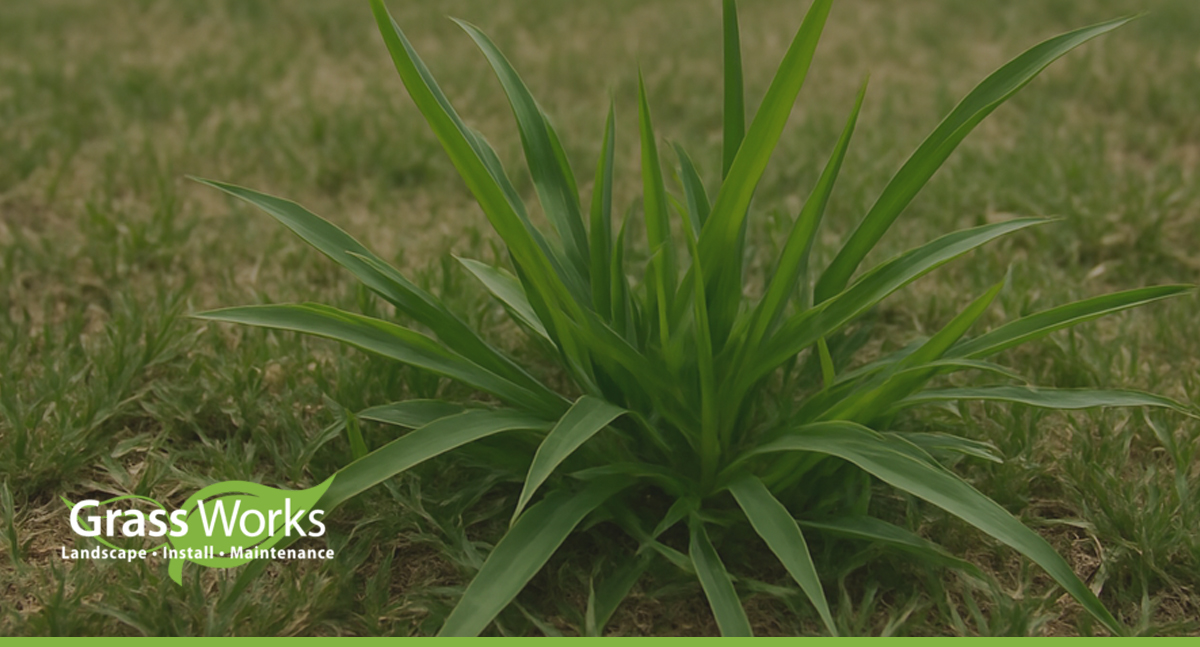How to Get Rid of Crabgrass in Central Texas

Crabgrass is among the most common weeds you’ll find thriving in the warm central Texas climate. Left unchecked, it can spread rapidly to take over your lawn. Whether you’d like to avoid an infestation or deal with an existing one, understanding how to get rid of crabgrass is key to enjoying a lush and healthy lawn.
What Is Crabgrass?
Crabgrass is among the most common weeds found anywhere in hot and dry conditions. It’s called crabgrass because of its stems that have a sprawling growth pattern and stay low to the ground, resembling crab legs. Once it takes hold, it will spread aggressively, making it a challenge to deal with.
This weed germinates in the spring when soil temperatures are around 60°F. It produces thousands of seeds, so it will keep coming back year after year if it isn’t dealt with. Crabgrass is sporadic and patchy, unlike the turfgrass you’d likely prefer to have dominate your yard.
Stopping Crabgrass Before It Takes Hold
The best way to manage crabgrass is to stop it from growing in the first place. You can consider a pre-emergent herbicide in the early spring to prevent seeds from sprouting. Make sure to apply the treatment when temperatures first approach 60°F to achieve results.
You can also help deter crabgrass by maintaining your desired lawn. A dense, healthy lawn is much more difficult for crabgrass to infiltrate. Mowing at the recommended height for your specific grass type will help deter weeds of all kinds.
Deep watering is also an effective strategy, as it supports the established grass root system instead of invasive weeds.
Removing Existing Crabgrass
If crabgrass has already taken hold, you should act quickly to prevent further spread. For a small infestation, hand-pulling can be highly effective. Make sure to remove the roots to prevent regrowth.
Large infestations may call for a post-emergent herbicide application specifically designed for crabgrass. You can leave this to the professionals or consider off-the-shelf products. Make sure to follow instructions carefully to ensure safety and effectiveness if you go the DIY route.
Making Your Lawn Resistant to Crabgrass
After dealing with crabgrass, you’ll want to ensure it doesn’t come back. Plant additional seeds for your preferred grass in thin areas to help crowd crabgrass out. You should also consider regular aeration to reduce soil compaction and make it harder for crabgrass to take hold.
Fertilizing your lawn is another effective strategy. Focusing on key times throughout the year to strengthen your existing lawn can give it the advantage it needs over weeds. However, excessive fertilization during summer months can actually contribute to crabgrass growth.
Paying close attention to your mowing, watering, and nutrient balance will let your desired grass thrive while keeping crabgrass out.
There’s No Need to Put Up With Crabgrass
Tackling crabgrass can be a challenge, but with the right approach, you can save your lawn. A combination of preventive care, prompt removal, and proper lawn maintenance will deliver lasting success. By putting these strategies into action, central Texas homeowners can enjoy a lush yard free of this unwieldy nuisance.
Need help with your crabgrass in Central Texas? Contact Grass Works Lawn Care today!

Ferris MyCue is the founder and owner of Grass Works Lawn Care, LLC located in Leander, TX. As a former firefighter who maintained yards on his days off, he saw a need for a dependable, local maintenance company that knew the hill country climate and could deliver quality landscaping services for a reasonable price. Since 2007 he has used his leadership to grow the company into one of the top landscape maintenance companies in Austin and surrounding areas offering landscape maintenance, design, and irrigation services to both residential and commercial clients. Ferris is also a member of the Seasonal Employment Alliance (SEA) and an active participant in advocacy efforts to help promote cap relief.